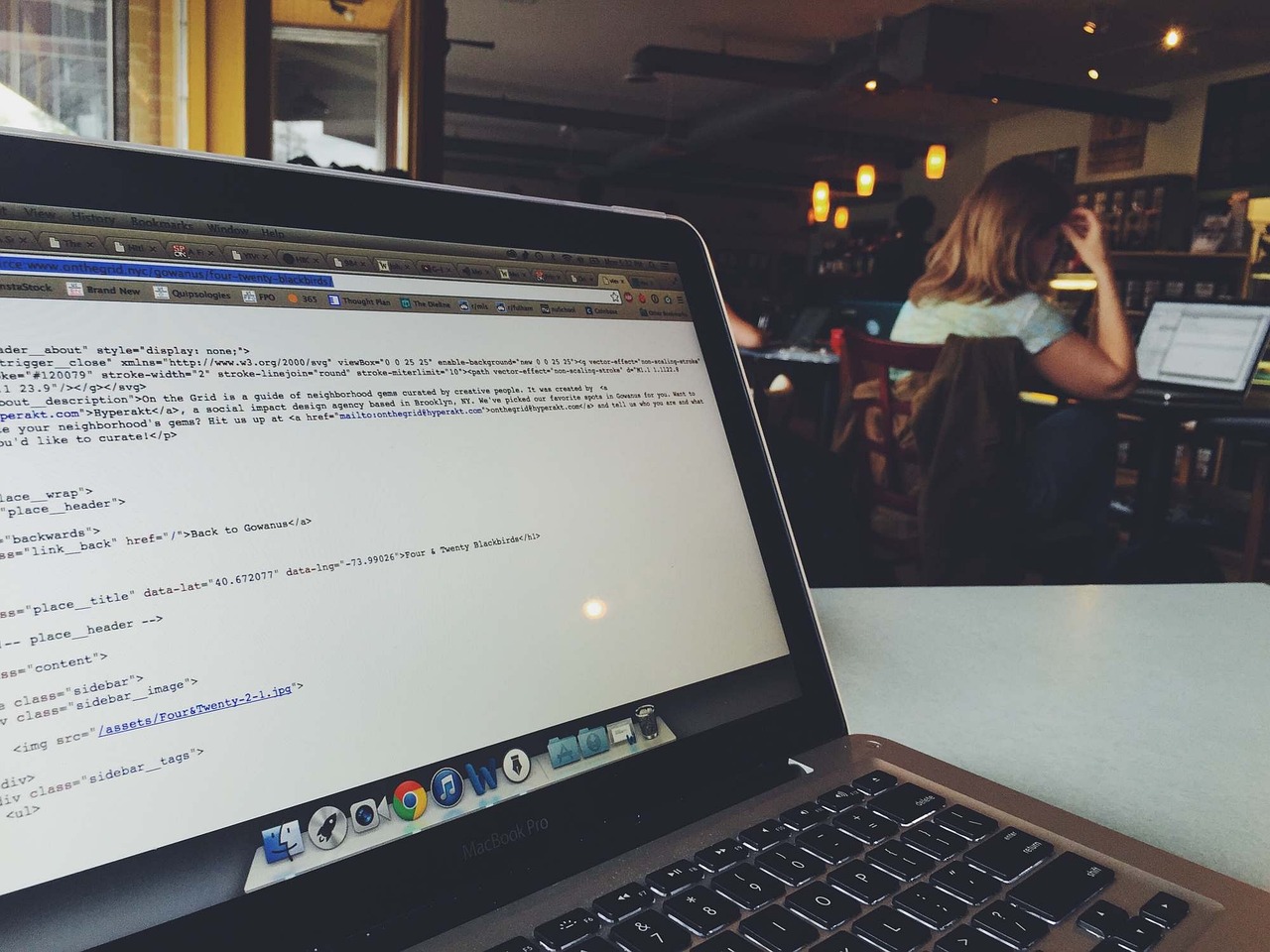In the rapidly evolving fields of Data Science and Artificial Intelligence, discovering hidden patterns in large datasets has become increasingly important. Unsupervised Learning, a subset of machine learning, is revolutionizing the way we understand and manipulate data by providing powerful algorithms that require no labeled input data. This comprehensive article delves into various Unsupervised Learning Algorithms, such as k-means clustering, Principal Component Analysis (PCA), and t-SNE, exploring their applications and the profound impact they have across multiple sectors. Join us as we uncover the mechanisms behind these sophisticated data analysis techniques and their pivotal role in enhancing pattern recognition and decision-making capabilities.
Introduction to Unsupervised Learning
Unsupervised learning is a subset of machine learning where the goal is to find hidden patterns or intrinsic structures in input data without pre-existing labels or categories. Unlike supervised learning, where models are trained on labeled datasets, unsupervised learning algorithms operate on data that is neither classified nor labeled. This process is crucial for exploratory data analysis, pattern recognition, and the extraction of meaningful information from large datasets, often referred to as Big Data.
The essence of unsupervised learning lies in its capability to learn and generalize from data without human intervention. This approach is valuable in situations where labeled data is scarce or expensive to obtain. Instead of focusing on prediction or classification, unsupervised learning algorithms aim to understand the underlying distribution and relationships within the dataset.
Consider the task of clustering, a popular application of unsupervised learning. Clustering algorithms like k-means and DBSCAN group data points based on their similarities. For example, in a retail context, clustering can segment customers into distinct groups based on their purchase behavior, allowing for targeted marketing strategies.
Another essential aspect of unsupervised learning is dimensionality reduction. Techniques such as Principal Component Analysis (PCA) and t-Distributed Stochastic Neighbor Embedding (T-SNE) transform high-dimensional data into a lower-dimensional form, preserving essential features while reducing complexity. These techniques are especially useful for visualization and simplifying datasets to facilitate further analysis.
Anomaly detection represents another vital application, where unsupervised models identify outliers or unusual patterns in data that may indicate fraud, network security threats, or defective products. Algorithms like Isolation Forest and autoencoders are commonly employed in this domain.
Prominent unsupervised learning algorithms also include self-organizing maps (SOMs) and various types of neural networks, which have found applications in fields ranging from bioinformatics to robotics. These models can adapt to the structure of the data, offering flexible solutions to complex problems.
To gain a deeper understanding, let’s explore Python code snippets implementing some of these algorithms. Below is an example using k-means clustering from the popular scikit-learn library:
from sklearn.cluster import KMeans
import numpy as np
# Sample data
data = np.array([[1, 2], [1, 4], [1, 0],
[10, 2], [10, 4], [10, 0]])
# Initialize k-means with 2 clusters
kmeans = KMeans(n_clusters=2, random_state=0)
# Fit the model
kmeans.fit(data)
# Predict cluster indices for input data
print(kmeans.labels_)
The code above illustrates how to cluster a small dataset into two clusters using k-means. The labels_ attribute shows the cluster index assigned to each data point.
As unsupervised learning continues to evolve, its applications across various industries and research fields are only expanding, making it an indispensable tool in the data scientist’s toolkit. Understanding and leveraging unsupervised learning algorithms are foundational skills for anyone aiming to uncover hidden patterns within complex datasets.
For further reading, refer to the scikit-learn documentation for more details on implementing various unsupervised learning algorithms in Python.
Core Concepts: Understanding Hidden Patterns
Unsupervised Learning hinges on uncovering Hidden Patterns within data to make sense of it without predefined labels. Unlike supervised learning, which relies on labeled datasets to train models, unsupervised learning algorithms rely purely on the inherent structure of your data. The objective is to identify the underlying patterns, anomalies, and relationships within the data.
One foundational concept in the domain of Unsupervised Learning is clustering. Clustering algorithms aim to partition data points into distinct groups, or clusters, where data points within each group exhibit high similarity and are significantly different from those in other groups. For instance, in customer segmentation, clustering can help in distinguishing different customer profiles based purely on purchasing behavior or browsing history.
Another core concept crucial for grasping Hidden Patterns is dimensionality reduction. Real-world datasets, especially in domains like genomics or image processing, often contain a multitude of features. High dimensionality can obscure the true relationships between data points. Principal Component Analysis (PCA) and t-Distributed Stochastic Neighbor Embedding (T-SNE) are widely-used techniques in this context. PCA transforms the data into fewer dimensions by identifying the principal components that account for the most variance in the data. T-SNE, on the other hand, is useful for visualizing high-dimensional data by mapping it to lower dimensions, particularly aiding in visualizing clusters.
Pattern recognition, facilitated through techniques like PCA, is essentially about identifying regularities and anomalies within the data. For example, PCA can be employed to detect outliers by projecting data onto the principal components and identifying observations that deviate significantly from the norm.
Self-Organizing Maps (SOMs) represent another approach for finding hidden patterns. SOMs are a type of artificial neural network trained using unsupervised learning to produce a low-dimensional, discretized representation of the input space. This can be particularly useful in reducing the dimensionality of signal data while preserving the topological properties of the input data.
A more nuanced understanding of Hidden Patterns can be achieved through Density-Based Spatial Clustering of Applications with Noise (DBSCAN). Unlike k-means clustering, which requires the specification of the number of clusters ahead of time, DBSCAN can automatically determine the number of clusters based on the density of data points. This algorithm is particularly useful in identifying clusters of arbitrary shape and is robust against noise and outliers.
Finally, it’s crucial to highlight the importance of anomaly detection in the context of Hidden Patterns. Anomaly detection algorithms aim to identify data points that deviate significantly from the expected pattern. This can be achieved through various techniques such as clustering, where anomalies are identified as data points that do not fit well within any identified cluster, or through more sophisticated approaches like neural network-based autoencoders.
For further details about specific algorithms and their implementations, the readers can refer to the official documentation:
- Scikit-learn’s Clustering
- Principal Component Analysis (PCA) in Scikit-learn
- t-Distributed Stochastic Neighbor Embedding (T-SNE) in Scikit-learn
- DBSCAN in Scikit-learn
- Self-Organizing Maps (example implementation in PyTorch)
Understanding these core concepts equips data scientists with the tools needed to uncover hidden insights, facilitating more informed data-driven decision-making.
Key Unsupervised Learning Algorithms Explained
Unsupervised learning algorithms are designed to uncover the inherent structure from data without the explicit need for labeled outcomes. Let’s dive deep into some of the most prominent algorithms that excel at identifying hidden patterns in data.
Clustering Techniques: DBSCAN
Density-Based Spatial Clustering of Applications with Noise (DBSCAN) is an efficient clustering algorithm that deals well with noisy data and can identify arbitrarily shaped clusters. Unlike k-means, it does not require the number of clusters to be specified in advance. DBSCAN works by grouping together points that are closely packed and marking points that are isolated as noise.
- Parameters: Two main parameters of DBSCAN are
eps(the maximum distance between two points in the same cluster) andmin_samples(the minimum number of points to form a dense region). - Benefits: Excellent at handling noise and discovering clusters of arbitrary shapes.
- Use Case Example: DBSCAN can be highly effective in geographical clustering applications where the data points naturally form irregular shapes, such as geographical feature detection or market area analysis.
from sklearn.cluster import DBSCAN
import numpy as np
# Sample data
X = np.array([[1, 2], [2, 2], [2, 3],
[8, 7], [8, 8], [25, 80]])
db = DBSCAN(eps=3, min_samples=2).fit(X)
labels = db.labels_
print("Cluster Labels:", labels)
Principal Component Analysis (PCA)
Principal Component Analysis (PCA) is a linear dimensionality reduction technique that transforms the features into a lower-dimensional space while preserving as much variance as possible. PCA achieves this by identifying the principal components, which are the directions of maximum variance in the data.
- Functionality: PCA transforms data into components using eigenvectors and eigenvalues, which represent the directions and magnitudes of the most significant variance in the dataset.
- Benefits: Reduces the dimensionality of data, which can improve computation efficiency and reduce overfitting in models.
- Use Case Example: PCA is extensively used in image data compression and visualization of high-dimensional data.
from sklearn.decomposition import PCA
# Sample 3D data
X = np.array([[1, 2, 3], [3, 4, 5], [5, 6, 7],
[8, 9, 6], [1, 0, 1], [4, 5, 6]])
pca = PCA(n_components=2)
X_reduced = pca.fit_transform(X)
print("Reduced Data:\n", X_reduced)
T-Distributed Stochastic Neighbor Embedding (T-SNE)
T-Distributed Stochastic Neighbor Embedding (T-SNE) is a powerful non-linear dimensionality reduction technique particularly well-suited for data visualization in two or three dimensions. It is designed to preserve local relationships in high-dimensional data by creating a probability distribution over pairs of high-dimensional objects in such a way that similar objects have a higher probability of being close.
- Workflow: T-SNE works by converting distances between data points into probabilities. The algorithm minimizes the divergence between the two distributions (one for the high-dimensional and one for the low-dimensional data).
- Benefits: Excellent in visualizing data with complex structure and in finding hidden patterns.
- Use Case Example: Widely used in visualizing clusters of high-dimensional data, such as genetic data or the distribution of learned features in neural networks.
from sklearn.manifold import TSNE
# Sample high-dimensional data
X = np.random.rand(100, 50)
tsne = TSNE(n_components=2)
X_embedded = tsne.fit_transform(X)
print("2D Visualization Data:\n", X_embedded)
Self-Organizing Maps (SOM)
Self-Organizing Maps (SOM), a type of artificial neural network, are used to produce a low-dimensional (typically two-dimensional) representation of the training samples while preserving the topological properties of the input space. It’s particularly useful in pattern recognition tasks.
- Architecture: SOM consists of a grid of neurons, each having a weight vector of the same dimensionality as the input data. During training, the map organizes itself to reflect the density and distribution of the input data.
- Benefits: Excellent for visualizing high-dimensional data and understanding its structure.
- Use Case Example: Often applied in competitive market analysis, customer segmentation, and data visualization.
from minisom import MiniSom
# Example data
X = np.random.rand(100, 3)
# Initialize SOM
som = MiniSom(7, 7, 3, sigma=0.3, learning_rate=0.5)
som.train_random(X, 100) # Train for 100 iterations
print("Trained SOM weights:\n", som.get_weights())
These algorithms exemplify the versatility and power of unsupervised learning in uncovering hidden patterns and structures in data, making them invaluable tools in the arsenal of data scientists and machine learning practitioners.
Clustering Techniques: k-means and Hierarchical Clustering
Clustering Techniques: k-means and Hierarchical Clustering
Clustering, a cornerstone of unsupervised learning, involves grouping data points in such a way that items in the same group (or cluster) are more similar to each other than to those in different clusters. Two prominent techniques in clustering are k-means and hierarchical clustering.
k-means Clustering
The k-means clustering algorithm aims to divide n data points into k clusters, where each point belongs to the cluster with the nearest mean (centroid).
Steps to Implement k-means
- Initialize Centroids: Randomly choose
kdata points as the initial centroids. - Cluster Assignment: Assign each data point to the nearest centroid.
- Update Centroids: Calculate the new centroids as the mean of all data points in each cluster.
- Iterate: Repeat steps 2 and 3 until centroids no longer change significantly or after a set number of iterations.
Example
from sklearn.cluster import KMeans
import numpy as np
# Sample data
data = np.array([
[1.0, 2.0], [1.5, 1.8], [5.0, 8.0],
[8.0, 8.0], [1.0, 0.6], [9.0, 11.0]
])
# Apply k-means clustering
kmeans = KMeans(n_clusters=2)
kmeans.fit(data)
# Output cluster centroids and labels
print("Centroids:", kmeans.cluster_centers_)
print("Labels:", kmeans.labels_)
- Centroids: The computed centers of the clusters.
- Labels: Cluster assignment for each data point.
Applications
Common applications of k-means clustering include customer segmentation, document clustering, and image compression.
Hierarchical Clustering
Hierarchical clustering creates a tree of clusters (dendrogram), which allows you to see how clusters are nested.
Key Approaches
- Agglomerative (Bottom-Up): Start with each data point in its own cluster and iteratively merge the closest pairs of clusters.
- Divisive (Top-Down): Start with one cluster containing all data points and recursively split it into smaller clusters.
Steps to Implement Agglomerative Clustering
- Compute Proximity Matrix: Calculate a distance matrix for all data points.
- Initialize Clusters: Start with each data point as its own cluster.
- Merge Clusters: Find the two closest clusters and merge them.
- Repeat: Update the proximity matrix and repeat until all data points are merged into a single cluster.
Example
from sklearn.cluster import AgglomerativeClustering
import numpy as np
# Sample data
data = np.array([
[1.0, 2.0], [1.5, 1.8], [5.0, 8.0],
[8.0, 8.0], [1.0, 0.6], [9.0, 11.0]
])
# Apply Agglomerative Clustering
hc = AgglomerativeClustering(n_clusters=2)
labels = hc.fit_predict(data)
print("Labels:", labels)
Distance Metrics and Linkage Criteria
- Distance Metrics: Euclidean, Manhattan, Cosine.
- Linkage Criteria: Single, complete, average, ward.
Applications
Hierarchical clustering is widely used in bioinformatics, social network analysis, and market research for hierarchical taxonomies.
Considerations & Best Practices
- Initial k value (k-means): Optimal k can be determined using methods like the elbow method.
- Scalability: k-means is generally more scalable than hierarchical clustering.
- Data Normalization: Both methods often require data to be normalized for better performance.
For further details, check the scikit-learn documentation for k-means and hierarchical clustering.
Dimensionality Reduction: PCA and T-SNE
Dimensionality reduction is a critical step in unsupervised learning, especially when dealing with Big Data. It helps in reducing the number of random variables under consideration by obtaining a set of principal variables. This section will delve into two powerful techniques for dimensionality reduction: Principal Component Analysis (PCA) and t-Distributed Stochastic Neighbor Embedding (T-SNE).
Principal Component Analysis (PCA)
PCA is a statistical procedure that uses an orthogonal transformation to convert a set of possibly correlated variables into a set of linearly uncorrelated variables called principal components. The idea is to reduce the dimensionality of the data while retaining as much variance (information) as possible. Here’s a step-by-step outline of how PCA works:
- Standardize the Data: Since PCA is affected by the scale of the measurements, it’s crucial to standardize the data.
from sklearn.preprocessing import StandardScaler scaler = StandardScaler() standardized_data = scaler.fit_transform(data) - Compute the Covariance Matrix: This matrix helps in understanding the directions in which the data varies the most.
covariance_matrix = np.cov(standardized_data, rowvar=False) - Calculate Eigenvalues and Eigenvectors: These determine the principal components.
eigenvalues, eigenvectors = np.linalg.eig(covariance_matrix) - Project the Data: Use the eigenvectors to project the data onto the new feature space.
principal_components = np.dot(standardized_data, eigenvectors[:, :n_components])
Documentation: You can find more about PCA in the scikit-learn documentation.
t-Distributed Stochastic Neighbor Embedding (T-SNE)
Unlike PCA, T-SNE is a non-linear dimensionality reduction technique particularly well-suited for embedding high-dimensional data into a 2D or 3D space for visualization. T-SNE constructs a probability distribution over pairs of high-dimensional objects in such a way that similar objects have a high probability of being picked, while dissimilar objects have a low probability.
- Define the Probability Distribution: T-SNE starts by defining a probability distribution over pairs of high-dimensional data points.
from sklearn.manifold import TSNE tsne = TSNE(n_components=2, random_state=42) - Minimize the Kullback-Leibler Divergence: The algorithm then attempts to minimize the Kullback-Leibler divergence between this distribution and the analogous distribution in the lower-dimensional space.
tsne_results = tsne.fit_transform(data) - Visualize the Results: The lower-dimensional embedding can then be visualized using plotting libraries.
import matplotlib.pyplot as plt plt.scatter(tsne_results[:, 0], tsne_results[:, 1]) plt.show()
Documentation: Detailed explanations and parameters for T-SNE can be found in the scikit-learn documentation.
Comparison and Use Cases
While PCA is computationally inexpensive and works well for linear separability, T-SNE excels in capturing complex structures in high-dimensional data but at the cost of higher computational effort and the lack of interpretability of the resulting dimensions. Both techniques are pivotal in the Data Analysis Techniques toolbox, offering complementary strengths depending on the problem at hand.
By leveraging PCA and T-SNE, data scientists can effectively reduce dimensionality, facilitate exploratory data analysis, and uncover hidden patterns that would otherwise remain unnoticed.
Applications and Use Cases in Data Science
Unsupervised learning algorithms are powerful tools in data science, aimed at uncovering hidden patterns and insights from unlabelled datasets. Below are some prominent applications and use cases where unsupervised learning shines:
Customer Segmentation
One of the most common applications is in marketing, where businesses use clustering techniques such as k-means clustering to segment customers based on various attributes like behavior, demographics, and purchasing patterns. This helps in tailoring marketing strategies and personalized communications.
from sklearn.cluster import KMeans
import pandas as pd
# Example: Customer segmentation
data = pd.read_csv('customer_data.csv')
kmeans = KMeans(n_clusters=5, random_state=0).fit(data)
data['cluster'] = kmeans.labels_
By segmenting customers, businesses can create targeted campaigns, thereby increasing engagement and conversion rates.
Anomaly Detection
In the realm of cybersecurity and fraud detection, anomaly detection techniques such as Isolation Forest and DBSCAN (Density-Based Spatial Clustering of Applications with Noise) are crucial for identifying unusual patterns that do not conform to expected behavior.
from sklearn.ensemble import IsolationForest
import pandas as pd
# Example: Anomaly detection
transaction_data = pd.read_csv('transaction_data.csv')
iso_forest = IsolationForest(contamination=0.01).fit(transaction_data)
transaction_data['anomaly_score'] = iso_forest.decision_function(transaction_data)
transaction_data['anomaly'] = iso_forest.predict(transaction_data)
Detection of early-stage intrusions and fraudulent activities can save organizations from significant losses and security breaches.
Image Compression
Techniques such as Principal Component Analysis (PCA) and autoencoders (a type of neural network) are employed to reduce the dimensionality of image data, thus facilitating efficient storage and quicker transmission.
from sklearn.decomposition import PCA
import numpy as np
# Example: Image compression
image_data = np.random.random((100, 64, 64))
pca = PCA(n_components=50)
compressed_image = pca.fit_transform(image_data.reshape(100, -1))
Reduced image representations can often retain most of the pertinent information with a fraction of the storage requirements.
Gene Expression Analysis
In bioinformatics, unsupervised learning methods like hierarchical clustering and Self-Organizing Maps (SOM) are used to analyze gene expression data. These methods help in identifying groups of genes that show similar expression patterns across various conditions or time points.
import numpy as np
from scipy.cluster.hierarchy import dendrogram, linkage
# Example: Gene expression analysis
gene_data = np.random.random((50, 100))
linked = linkage(gene_data, 'single')
dendrogram(linked)
Such analysis is instrumental in understanding gene function, disease mechanisms, and discovering potential targets for drug therapy.
Document Clustering
In the field of natural language processing (NLP), techniques like Latent Dirichlet Allocation (LDA) and clustering algorithms are used for topic modeling and document clustering. These allow for the automatic organization of large text corpora, making it easier to browse and retrieve information.
from sklearn.decomposition import LatentDirichletAllocation
import numpy as np
# Example: Document clustering
document_data = np.random.random((1000, 10000))
lda = LatentDirichletAllocation(n_components=10, random_state=0)
document_topics = lda.fit_transform(document_data)
Understanding the underlying topics in a document collection can greatly enhance content recommendation systems and search functionality.
Recommendation Systems
Unsupervised learning techniques, including matrix factorization and collaborative filtering, are pivotal components in recommendation systems used by platforms like Netflix and Amazon. These algorithms recommend products, movies, or other items by identifying patterns and similarities between users and items.
import numpy as np
from sklearn.decomposition import NMF
# Example: Recommendation system
rating_matrix = np.random.random((100, 1000))
nmf = NMF(n_components=10, random_state=0)
user_features = nmf.fit_transform(rating_matrix)
item_features = nmf.components_
By learning the hidden patterns in user-item interactions, these systems can provide highly personalized recommendations.
The breadth of applications for unsupervised learning in data science is vast, and these examples only scratch the surface of its potential. The more we explore, the deeper we dive into the hidden patterns within the data, unlocking unprecedented insights and opportunities.
Challenges and Future Directions in Unsupervised Machine Learning
While unsupervised learning offers powerful tools for discovering hidden patterns within complex datasets, it is not without its challenges. One foundational challenge stems from the very nature of unsupervised learning: the lack of labeled data. Without labels to guide the learning process, algorithms often struggle to discern meaningful patterns from noise. This inherent uncertainty necessitates the development of more sophisticated and robust algorithms.
Scalability and Computational Complexity
As datasets grow, particularly in the era of Big Data, the scalability of unsupervised learning algorithms becomes a crucial issue. Techniques like k-means clustering and DBSCAN can be computationally intensive, especially when applied to high-dimensional data. This is where dimensionality reduction techniques like Principal Component Analysis (PCA) and T-distributed Stochastic Neighbor Embedding (T-SNE) can aid, but even these methods have limitations in handling very large datasets efficiently. Research is ongoing to develop more scalable algorithms that can handle vast amounts of data without a significant loss in performance or accuracy.
Interpretability and Evaluation
Another significant challenge is interpretability. Unlike supervised learning, where model performance can be directly assessed using metrics such as accuracy or F1 score, evaluating unsupervised models is less straightforward. Metrics like silhouette score, Davies-Bouldin index, or adjusted Rand index provide some insights, but they don’t fully capture the quality of the discovered patterns. Interpretability remains an open research area, with efforts being directed towards developing models that are not only effective but also understandable to human experts.
Dealing with Noise and Outliers
Handling noise and outliers is another difficult aspect. Real-world datasets are often messy, containing noisy entries and outliers that can skew results. Clustering algorithms like DBSCAN are better suited to handle outliers than k-means, yet they aren’t foolproof. Methods for robust feature extraction and anomaly detection are continually being refined to improve the reliability of unsupervised algorithms.
Future Directions
Integration with Deep Learning
The integration of unsupervised learning with deep learning frameworks represents a promising direction. Techniques like autoencoders and Generative Adversarial Networks (GANs) have shown potential in learning complex representations without supervision. Self-supervised learning, where the data provides its own supervision signal, is another burgeoning area. Neural networks trained in this manner can uncover intricate patterns and structures within the data.
Advances in Transfer Learning
Transfer learning, mainly used in supervised learning scenarios, is finding applications in unsupervised learning as well. Here, knowledge gained from labeled datasets can be transferred to unlabeled datasets, thus augmenting the unsupervised processes. For instance, pre-trained language models like BERT and GPT can assist in clustering text data effectively.
Higher Dimensional and Multimodal Data
With the rise of IoT and sensor networks, there is increasing interest in unsupervised methods for handling multimodal data – datasets combining different types of information like text, images, and sensor readings. The challenge lies in developing algorithms that can seamlessly integrate and analyze such diverse data types to discover useful patterns.
Continuing advancements in these areas promise to make unsupervised learning algorithms more robust, scalable, and interpretable, ultimately unlocking new possibilities for AI and machine learning applications. For further detailed reading, the documentation by Scikit-learn (https://scikit-learn.org/stable/modules/clustering.html) provides a comprehensive overview of various clustering techniques, their intricacies, and implementations.




